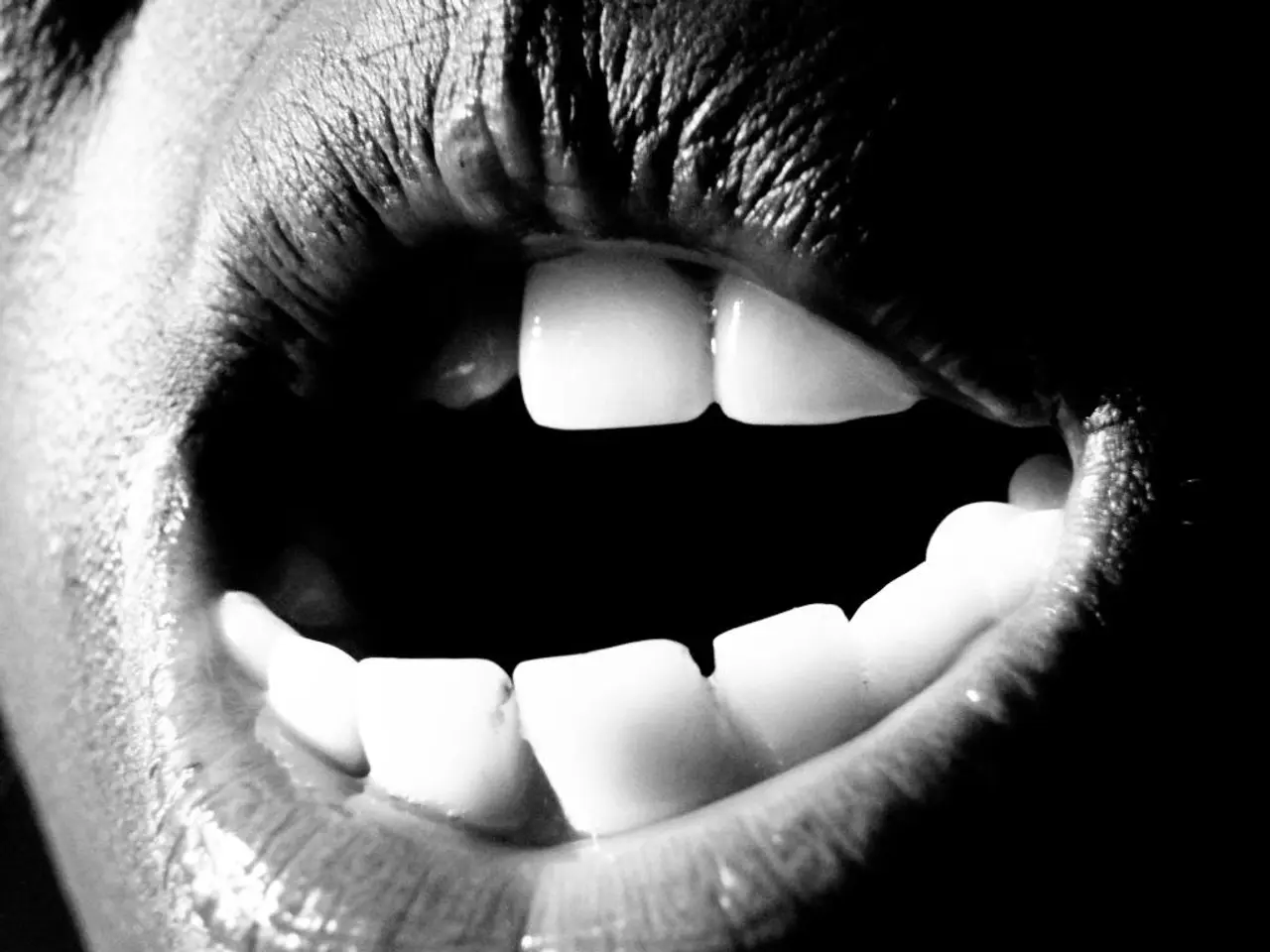Epstein Pearls: Identification, Underlying Causes, and Associated Symptoms, along with Their Treatment Options.
In the world of newborn care, understanding the differences between common oral conditions can be crucial. Two such conditions are Epstein pearls and oral thrush, both of which may be encountered in infants. Here's what parents should know about these conditions and how to distinguish them.
Epstein Pearls: Harmless Cysts in Newborns
Epstein pearls are harmless cysts that form in a newborn's mouth during development. These tiny, white or yellowish bumps or cysts, usually no larger than 3 millimeters in diameter, are caused by the entrapment of epithelial cells during the formation of the palate in the womb. They are not caused by anything the mother did during pregnancy.
Epstein pearls are typically painless and do not cause discomfort or feeding problems. They are usually found on the hard palate or gums and may be noticeable when a baby opens their mouth to cry or yawn but do not interfere with feeding. These cysts will disappear naturally within a few weeks and do not require any treatment.
Oral Thrush: A Fungal Infection in Infants
Oral thrush, on the other hand, is a fungal infection caused by Candida species. It can cause white patches or bumps in a baby's mouth, including on the inside of the cheeks and the tongue, and may cause some discomfort or difficulty feeding. If left untreated, oral thrush can spread to the woman's breast if she is breastfeeding, causing cracked nipples and painful breasts.
Oral thrush requires antifungal treatment, which is usually administered by a doctor. Symptoms of oral thrush may include white patches in the baby's mouth that can be wiped off, leaving red, raw areas underneath. The baby may also experience discomfort or have difficulty feeding.
Key Differences Between Epstein Pearls and Oral Thrush
The key differences between Epstein pearls and oral thrush lie in their appearance, cause, location, symptoms, duration, treatment, and other signs.
| Feature | Epstein Pearls | Oral Thrush | |----------------------|------------------------------------------------|----------------------------------------------| | **Appearance** | Tiny, white or yellowish bumps or cysts | White creamy patches or plaques | | **Cause** | Entrapment of epithelial cells during palate development, forming keratin-filled cysts | Fungal infection caused by Candida species | | **Location** | Usually on the hard palate or gums | Inside the mouth, including tongue, inner cheeks, gums, roof of mouth | | **Symptoms** | Painless, harmless, no feeding problems | May cause discomfort, pain, or difficulty feeding | | **Duration** | Disappear naturally within 1-2 weeks | Requires antifungal treatment to resolve | | **Treatment** | No treatment needed; do not pop or squeeze | Requires antifungal medications prescribed by a doctor | | **Other signs** | No redness, swelling, or irritation | May have redness, soreness, or slight bleeding if patches scraped |
How to Distinguish Them
Parents and caregivers can differentiate between Epstein pearls and oral thrush by noting the following:
- Epstein pearls appear as small, smooth, white-yellow cysts mostly on the roof of the mouth or gums and are asymptomatic. They are a normal, benign finding in 60-85% of newborns and usually resolve on their own within days to weeks without treatment.
- Oral thrush presents as creamy white patches that can be wiped off (sometimes leaving a red, raw area underneath), often causing discomfort to the baby and occasionally interfering with feeding. It is a fungal infection needing antifungal therapy.
In any uncertain or persistent case, consulting a pediatrician is important to confirm the diagnosis and start appropriate treatment if needed.
It is important to remember that Epstein pearls only occur in up to 60-85% of all newborns. If parents or caregivers have concerns that bumps in the baby's mouth have a different cause, they should consult a doctor.
Hand, foot, and mouth disease, another common condition in young children, should also be ruled out if a child exhibits symptoms such as sores in the mouth that blister, which may start as small red spots in the back of the mouth. If a child has any symptoms of hand, foot, and mouth disease, it is advisable to see a pediatrician.
In conclusion, understanding the differences between Epstein pearls and oral thrush can help parents and caregivers provide the best care for their newborns. By being aware of the symptoms, location, and appearance of these conditions, they can make informed decisions about when to consult a pediatrician and ensure their baby's oral health.
- While Epstein pearls are usually painless and do not cause discomfort, oral thrush can cause discomfort or difficulty feeding in infants.
- Unlike Epstein pearls, which are harmless cysts caused by the entrapment of epithelial cells during the formation of the palate, oral thrush is a fungal infection caused by Candida species.
- Parents can differentiate between Epstein pearls and oral thrush by noting that Epstein pearls appear as small, smooth, white-yellow cysts mostly on the roof of the mouth or gums, while oral thrush presents as creamy white patches that can be wiped off, often causing discomfort to the baby.
- For cases where it is uncertain or persistent, consulting a pediatrician is important to confirm the diagnosis and start appropriate treatment if needed, especially when considering other conditions like hand, foot, and mouth disease.
- Newborns may encounter several health-related issues, including obesity in children's health and skin conditions like psoriatic arthritis or mononucleosis in the realm of health-and-wellness, and maintaining a proper fitness-and-exercise routine and skin-care routine is essential for overall health.
- Depression and bipolar disorder are mental health issues that can be prevalent among caregivers, requiring care, support, and scientific research to better understand and address these conditions' causes and treatments.
- With new advancements in science, finding predictive tests for health conditions is becoming more achievable, like possibly identifying specific genetic markers that could help in preventing or curing diseases related to a newborn's health and wellbeing.




